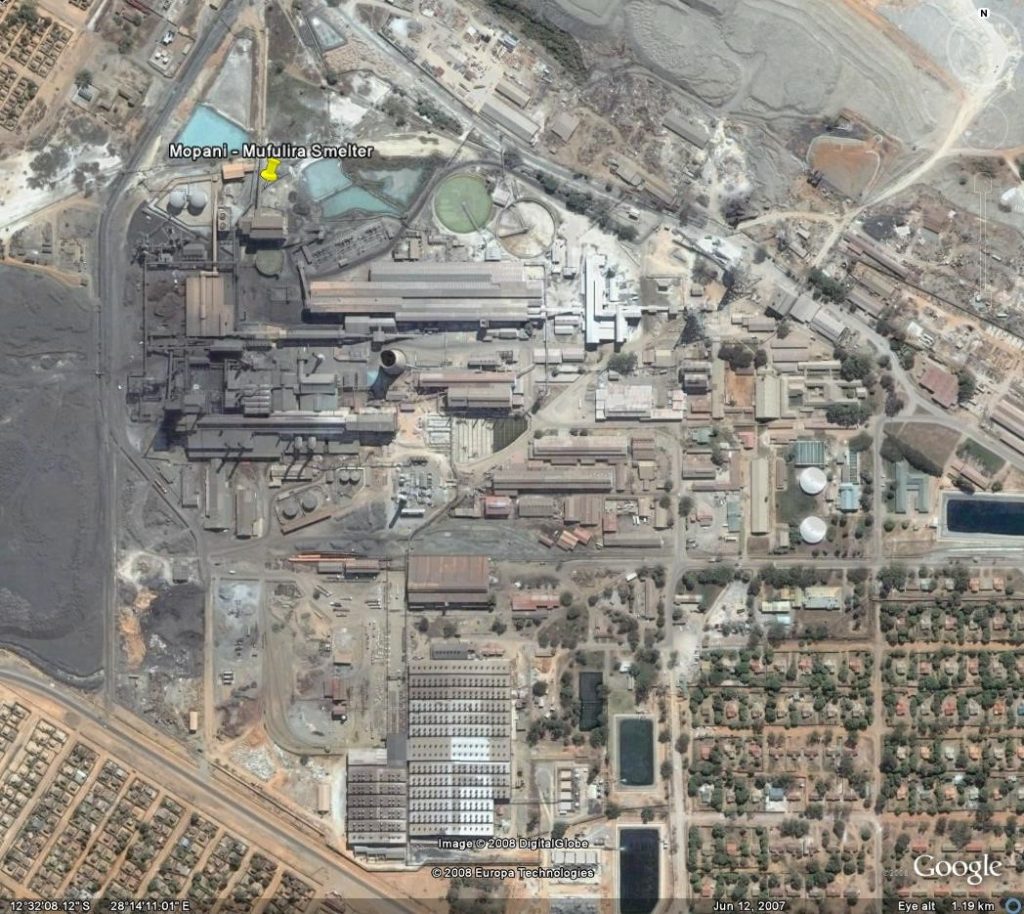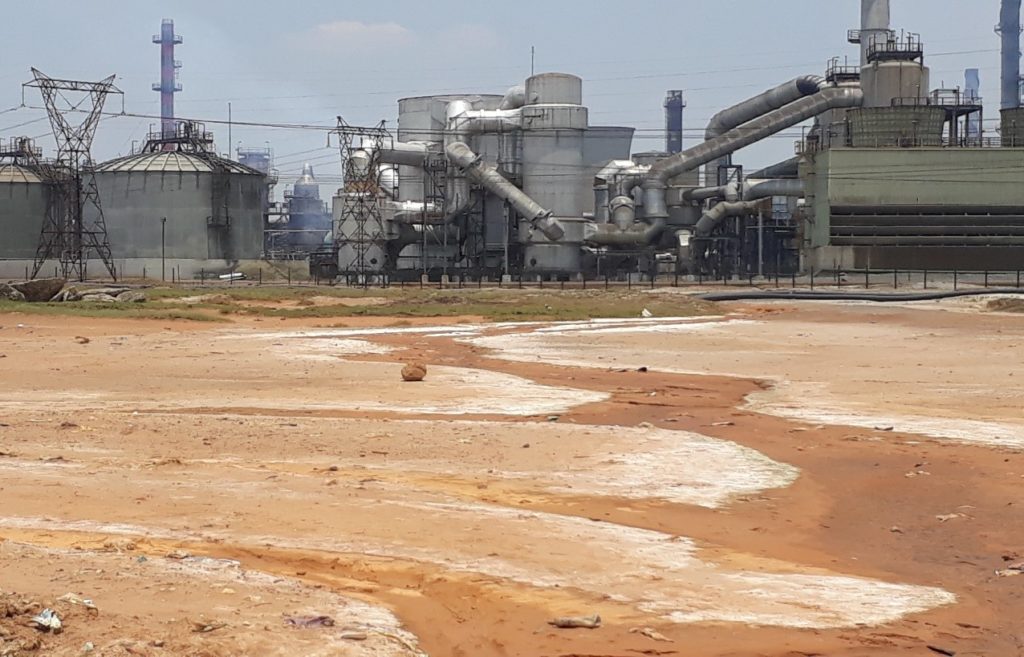
Jennifer is a final-year PhD candidate in the International Studies Group (ISG) at the University of the Free State. Her current research examines environmental pollution and regulation on the ‘old’ and ‘new’ Zambian Copperbelts from 1964 to the present.
Mufulira is as famous for copper production as it is for air pollution. Most of the town’s residents are routinely exposed to sulphur dioxide fumes, locally known as ‘senta’, but it is the communities closest to the mine that are most affected. My PhD research, which addresses environmental pollution and regulation on the ‘old’ and ‘new’ Copperbelts, includes the Mufulira communities of Kankoyo, Butondo and Zimba. Of these, Kankoyo is the most affected by air pollution, as it borders Mopani Copper Mines’ surface plants, including the recently constructed acid plant.

The houses located closest to the mine plant in Kankoyo have over the decades developed enormous cracks that have been linked to the tremors created by mining activities. The most damaged homes are mostly located within a section locally referred to as kuma spesho, translated as ‘the special area’. The name derives from the colonial era, when these houses were first constructed: the section housed African skilled labourers and their families. However, what was once a flourishing and promising community is now almost unrecognisable. The only constant within the community is the phenomenon for which Kankoyo, and Mufulira in general, has come to be known: sulphur dioxide pollution.
Mining-induced air pollution in Mufulira has been a major source of concern for residents since the Zambia Consolidated Copper Mines (ZCCM) era of the 1980s. Locals recall the occasional release of senta from the smelter during that time and suggest that African settlements were strategically positioned in proximity to the hazardous fumes during the initial construction of housing facilities for mineworkers in the colonial period. According to them, white mineworkers were themselves housed further away from the mine, and the potential pollution. After Independence, the state-owned ZCCM mines employed several strategies to curb environmental degradation. Despite this, there was a general failure to abide by many international standards for emissions and effluent. As a result, air pollution remained a significant challenge that continued beyond the privatization in the late 1990s, when foreign investors again took over the running of the mine.
Following the economic crises facing the industry from the 1970s onwards, privatisation brought much needed large-scale investment in Zambian mining. In 2000, the government sold the Mufulira mine, smelter and refinery to Glencore International, transforming it into Mopani Copper Mines Plc. However, the development agreements that were signed between the state and the new investors did not effectively address environmental protection. The failure of the state to provide a legislative framework that effectively addresses environmental pollution within the industry, and the opportunities that this creates for Mopani Copper Mines to self-regulate on this issue, have generated significant problems.
Following growing criticism over senta emissions, Mopani installed a new smelter in 2007 in an attempt to reduce emissions from the smelting process by up to 50%. However, the mining company refused to reveal what the existing air emissions were, antagonizing both residents and civil society organizations. In 2014, Mopani completed the construction of an acid plant that is reported to capture up to 97% of the sulphuric acid previously emitted into the air. The seemingly welcome move has, however, been condemned by locals who insist that the pollution is in fact worse than before. This is because they can no longer see the ‘acid fumes’ and now only realise that the senta has been released into the atmosphere when they experience the stinging sensation in their eyes and the choking effect that is associated with exposure to the substance. Local opinions, therefore, suggest that air pollution has not been effectively addressed by Mopani, and that senta has merely taken a new form. Residents now refer to the emissions as ‘acid fumes’ and suggest that its effect is worse than that of senta.
Since the installation of the acid plant, there have been several reports of Mufulira residents collapsing as a result of exposure to the fumes. The death of a local politician in 2016 resulted in even greater tension, as Mopani was sued by the widower of the deceased. In its defence, Mopani has continually cited the environmental indemnity agreements that were signed during privatization, which provide exemptions from environmental liabilities. The company also maintains that the sulphuric acid plant has successfully reduced air pollution.
During my research, representatives from the mine’s Environmental Department highlighted the difficulty of achieving a pollution-free process, given the nature of mining. Despite this, they maintained that the company was doing its utmost to ensure that air pollution concerns are addressed. Future plans reportedly include a project to reduce the emission of sulphur dioxide even further during the production process. The results of this project remain to be seen, as does the reaction of Kankoyo residents.

The Zambia Environmental Management Agency (ZEMA) is legally responsible for environmental regulation of the industry. ZEMA employees suggest that limited funding and manpower make effective regulation difficult. The Agency has also faced accusations concerning its renewal of the mining licences of companies such as Mopani, despite local concerns over the detrimental impact of their operations. This highlights a major impediment to mining-related environmental justice.
My research seeks to highlight the complex state-mining companies-community relationship, and its impact on environmental pollution and regulation. Where the government and mining companies fail to attain sustainable and safe mining, it is the local communities that experience the negative consequences of mining investment. Unfortunately, these communities lack support and information to achieve environmental justice. Of the Non-Governmental Organisations (NGOs) that are operational within the area, a local organisation known as ‘Green and Justice’ seems to be the most active. Green and Justice however faces similar constraints in dealing with Mopani as the community does. This makes their struggle for environmental justice a long and difficult process.
Despite the seemingly bleak story of Mufulira, the ‘place of abundance’, effective environmental management and the capacity to address past and current environmental problems have the ability to transform the town into an environmentally sustainable mining community.
All photographs except aerial photograph of Mufulira mine taken by the author.
